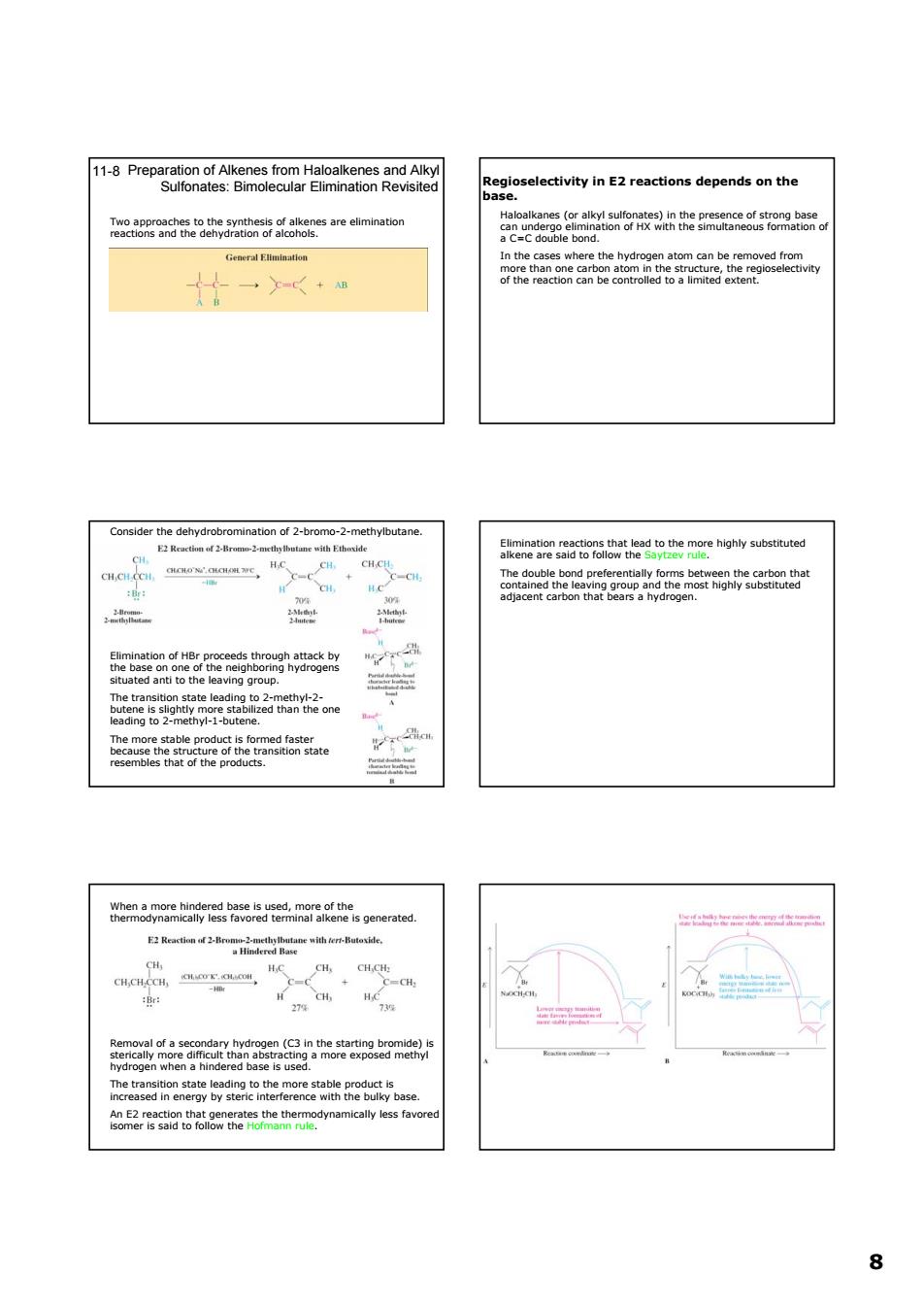正在加载图片...

selectivity in E2 reactions depends on the w the dehydrob 2-bromo-2-methylbutane. tothemre highlyd CHANC-C a 名松 … Mmeaeegeiegaegeamer9tesgenerate 四 the thermodynan 88 Preparation of Alkenes from Haloalkenes and Alkyl Sulfonates: Bimolecular Elimination Revisited 11-8 Two approaches to the synthesis of alkenes are elimination reactions and the dehydration of alcohols. Regioselectivity in E2 reactions depends on the base. Haloalkanes (or alkyl sulfonates) in the presence of strong base can undergo elimination of HX with the simultaneous formation of a C=C double bond. In the cases where the hydrogen atom can be removed from more than one carbon atom in the structure, the regioselectivity of the reaction can be controlled to a limited extent. Consider the dehydrobromination of 2-bromo-2-methylbutane. Elimination of HBr proceeds through attack by the base on one of the neighboring hydrogens situated anti to the leaving group. The transition state leading to 2-methyl-2- butene is slightly more stabilized than the one leading to 2-methyl-1-butene. The more stable product is formed faster because the structure of the transition state resembles that of the products. Elimination reactions that lead to the more highly substituted alkene are said to follow the Saytzev rule. The double bond preferentially forms between the carbon that contained the leaving group and the most highly substituted adjacent carbon that bears a hydrogen. When a more hindered base is used, more of the thermodynamically less favored terminal alkene is generated. Removal of a secondary hydrogen (C3 in the starting bromide) is sterically more difficult than abstracting a more exposed methyl hydrogen when a hindered base is used. The transition state leading to the more stable product is increased in energy by steric interference with the bulky base. An E2 reaction that generates the thermodynamically less favored isomer is said to follow the Hofmann rule